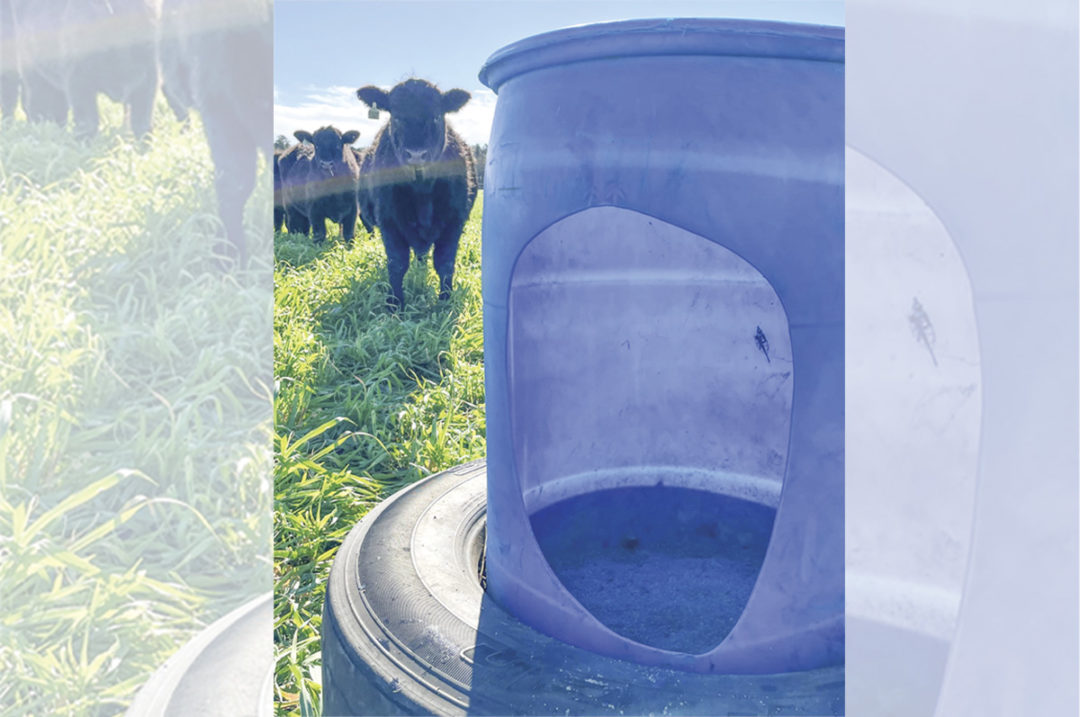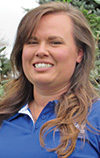Forty years ago, we demanded far less from cows and growing cattle. However, as we expect more from our livestock, nutrient requirements increase, and mineral nutrition becomes more important to success.
U.S. Meat Animal Research Center data show weaning weight has increased by roughly 55 pounds since the 1970s; furthermore, the mature bodyweight of a cow has increased almost 40% since 1975 (1,000 to 1,400 pounds). This indicates milk production has increased, along with nutritional demands on the cow. Not only is mineral critical for achieving production goals, but adequate bioavailable trace minerals such as copper and zinc are also crucial for improved immune response in newly weaned and stressed calves to maintain their health. Thus, it is imperative to prepare your mineral supplementation plan now prior to calving or weaning.
Here are three things to consider when choosing your optimal loose mineral:
1. Animal status
A mineral supplement plan begins with determining the animal’s status. This is crucial to meet the animal’s requirements without unnecessary cost. If the cow herd’s calving season is tightly managed, then you can tailor your mineral supplementation. During early lactation and rebreeding, you can provide more bioavailable minerals, but reduce the mineral supplement to gestating cows to match reduced maintenance requirements. A defined calving season also allows you to manage all weaned calves in a similar manner to provide more bioavailable minerals during the first 30 days following weaning for increased immunity support during that stressful time.
Some might say this strategy adds too much complexity, but by doing so you can improve the mineral efficiency by achieving improved health outcomes and production for your financial inputs. On the contrary, a single all-purpose mineral provided year round would supply too much nutrition to cows during gestation and not enough during calving and breeding. However, if your herd goals and resources do not allow for a defined calving season, then the all-purpose mineral could be an option.
2. Forage status and grain/commodity supplementation
Most feeds naturally contain minerals; however, the amount and availability of those minerals impacts the amount provided to the animal. Mineral supplements are influenced by geographical location and time of year due to the mineral content of forages being grazed and/or harvested. In the northcentral U.S., soil selenium is relatively high (greater than 2 parts per million – ppm), potentially resulting in selenium toxicity. However, in the Pacific Northwest, Great Lakes and Atlantic Coast regions, deficiencies of selenium are more common. Seasonal influences on forages can also determine mineral programs. Elevated potassium levels should be expected every spring with new forage growth. This makes it important to consider a mineral with elevated magnesium to overcome the competitive interactions between potassium and magnesium.
Supplemental feeds or commodities can also impact mineral programs. One recommendation I often have for producers is to supplement grain byproducts to meet protein requirements, and these commodities simultaneously help meet the animals’ phosphorus requirements. This allows us the opportunity to reduce cost to the producer by formulating a mineral with no supplemental phosphorous, which reduces cost.
3. Vehicle for additives
The logistics of treating cattle for improved health and wellbeing are sometimes so overwhelming that they prevent the task from being accomplished despite it being the most cost-effective choice. The following questions always run through my mind when I have to make a health treatment decision: Do I have enough labor? Do I have the correct facilities? Can I get that large group of stocker calves up to the working facility every time they need to be treated in a hurry? If just one of those pieces is missing, it makes accomplishing that task very difficult. Using mineral as a vehicle for feed additives can be an excellent way to address those difficulties.
If you have a concern with weaned-calf sickness or widespread pinkeye in stockers on cool-season annual pastures, or a group of cows struggling with anaplasmosis while grazing summer range, then a veterinary feed directive (VFD) for chlortetracycline in the mineral might be the best option. Minerals can also be a vehicle for a host of other additives including: ionophores for improved feed efficiency and prevention of coccidiosis outbreaks; vasodilators and toxin binders for fescue toxicosis mitigation; and fly control additives.
Conclusion
It is difficult to evaluate the economic loss associated with mineral deficiencies. Typically, you don’t know you have a mineral deficiency until you run into major issues. Mineral deficiencies can cause reduced conception rates and compromised colostrum quality and milk production in cows, resulting in decreased growth and health of calves. Investing in a well-balanced mineral program now can help ensure you do not run into any deficiencies in the future that will impact profitability. ![]()
PHOTO: Yearling steers grazing cool-season annuals with access to 6% Hi-Mag Mineral. Photo by Jordan L. O’Neill.
-
Jordan L. O’Neill
- Beef Consultant
- Great Plains Livestock Consulting Inc.
- Email Jordan L. O’Neill









